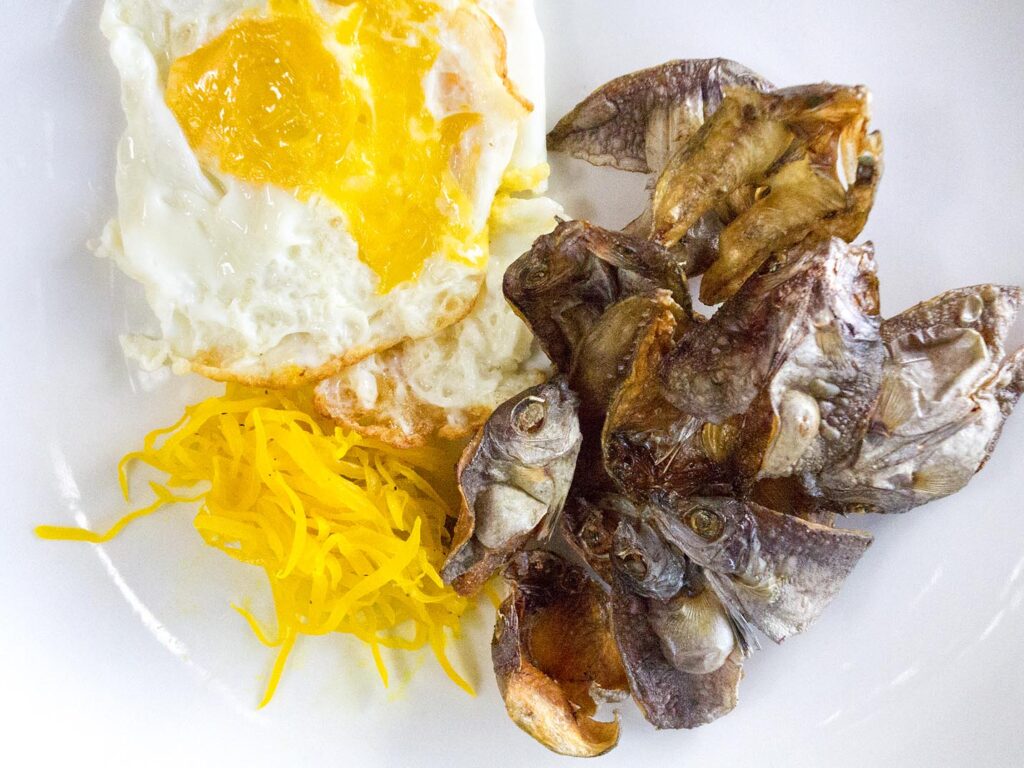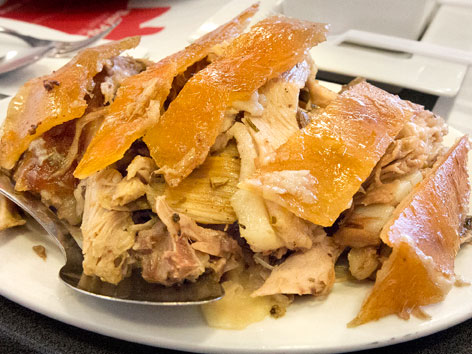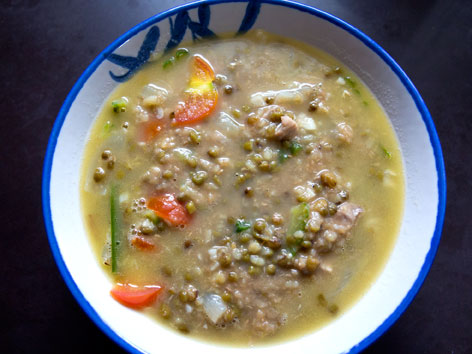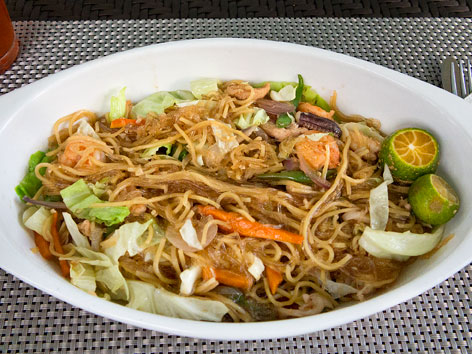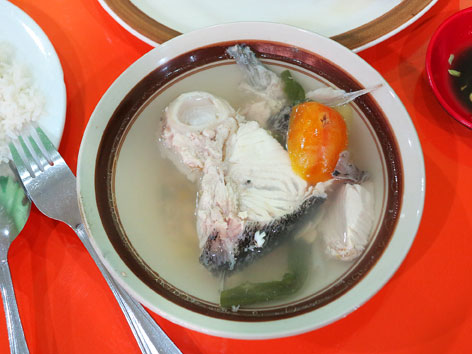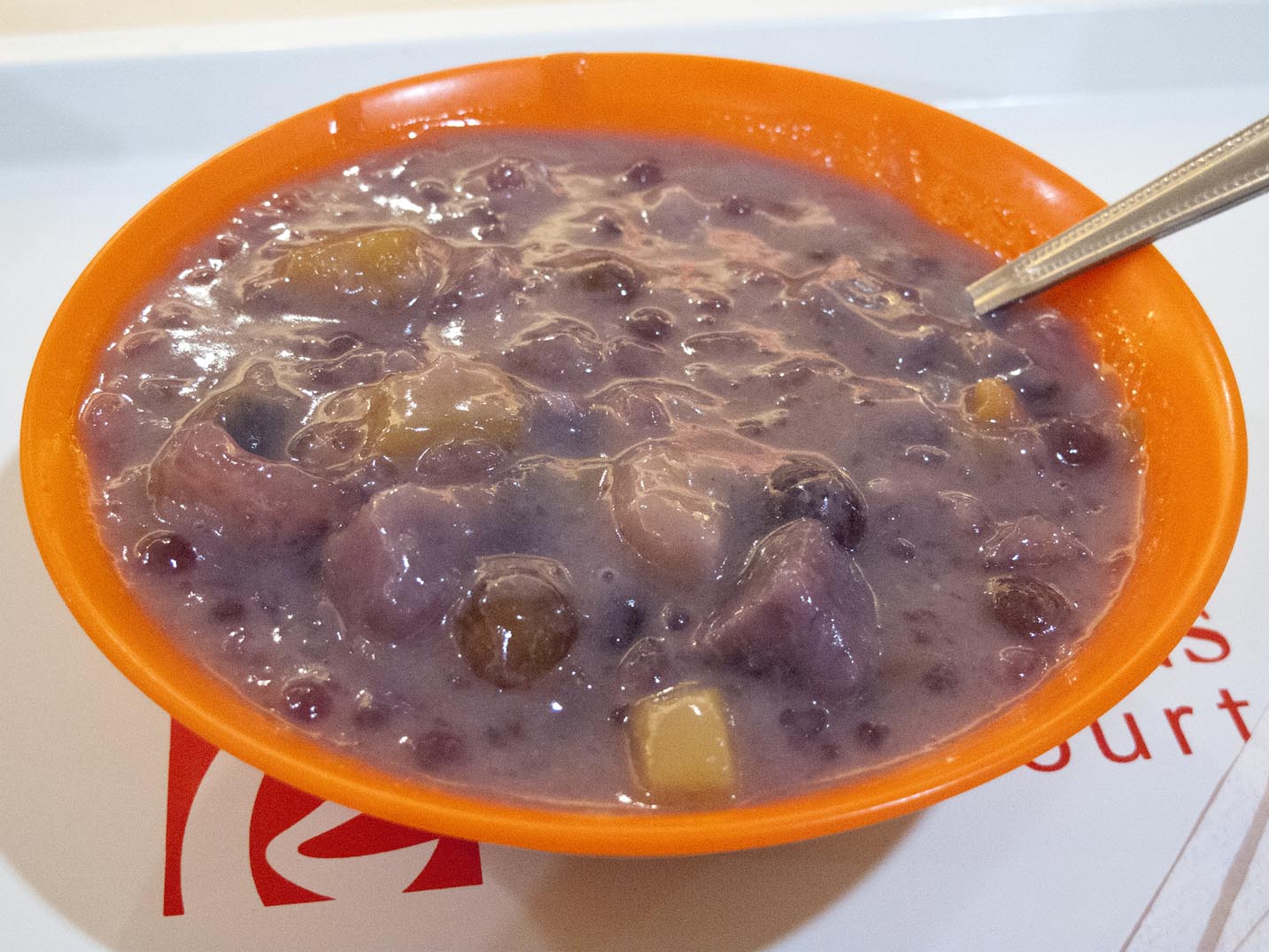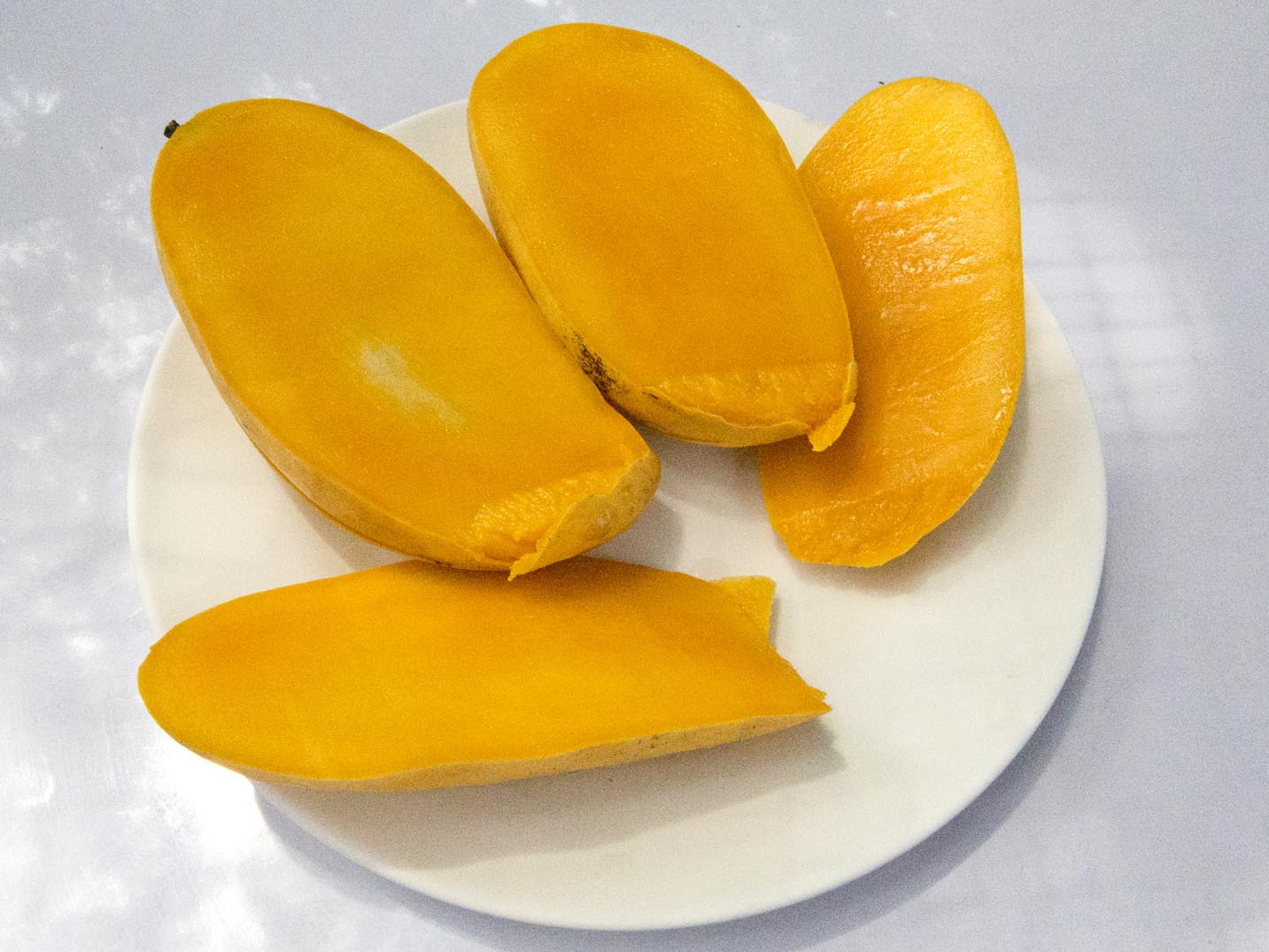Cebu is known for its danggit (“dang-git”)—salted, sun-dried rabbitfish (aka spinefoot), which is abundant and native to the island’s shallower waters. The fish are split open, cleaned, salted, and spread out on drying racks under the sun. Danggit is popular among locals as breakfast food, fried and paired with eggs, rice, and atsara (pickled unripe papaya), with a vinegar and chili dip on the side.
The smell of fried dried fish first thing in the morning might be off-putting to some, but judging by its popularity as pasalubong (“pah-sah-loo-bong,” gifts to hand out after a trip), Cebuanos love waking up to the pungent, sea-salty crunch of danggit.
Good to know: On average, rabbitfish can grow up to 14 inches or more and are locally known as kitang or samaral. When not dried into danggit, they are cooked fresh, usually fried whole or stewed in soups.
Where: The restaurants at the Montebello Villa Hotel (Gov. M. Cuenco Ave., Banilad, Cebu City) offer danggit on breakfast menus. The mid-priced hotel is tucked away behind the busy Gaisano Country Mall, and the al fresco dining areas might trick you into thinking you aren’t in the middle of a bustling city.
When: Daily, 6am-10am
Order: If you don't have access to the breakfast buffet, order the Filipino set breakfast (Php 270) and ask for danggit as your main item (you’re offered a choice of meat or fish). Choose between a cup of garlic fried or plain steamed rice, coffee or tea, two sunny-side up or scrambled eggs, and fruit juice (the powdered orange juice is terrible, so ask for fresh or canned juice).
The whole danggit served here is freshly fried, not at all greasy, and it’s a perfect complement to the rest of the breakfast set. The fish crumbles in your mouth when you eat it—and you are meant to eat all of it, body, head, tail, bones and all. The best pieces of danggit are about two inches long—bigger pieces become a challenge to chew, and dipping it in vinegar for too long only makes it chewier!
Traditionally, this heavy breakfast (sans fruit juice) is considered humble food—cheap but nourishing fare for farmers, fishermen, and laborers. We found it equally fueling for our labors, which fortunately involved only sightseeing and shopping.
Alternatively: The irony of danggit being “humble fare” is that you won’t find it in cheap eateries (the kind with food-filled pots and pans lined up all day). Danggit’s quality goes down in a heartbeat and is really best served fresh out of the frying pan.
You might take a chance at your hotel, or try the danggit breakfast set at a Vienna Kaffeehaus (multiple locations including Pedro Calomarde St., corner Gorordo Ave., in Gorordo, map) near you. (Just don’t ask us how an Austrian café came to serve danggit every day.)

